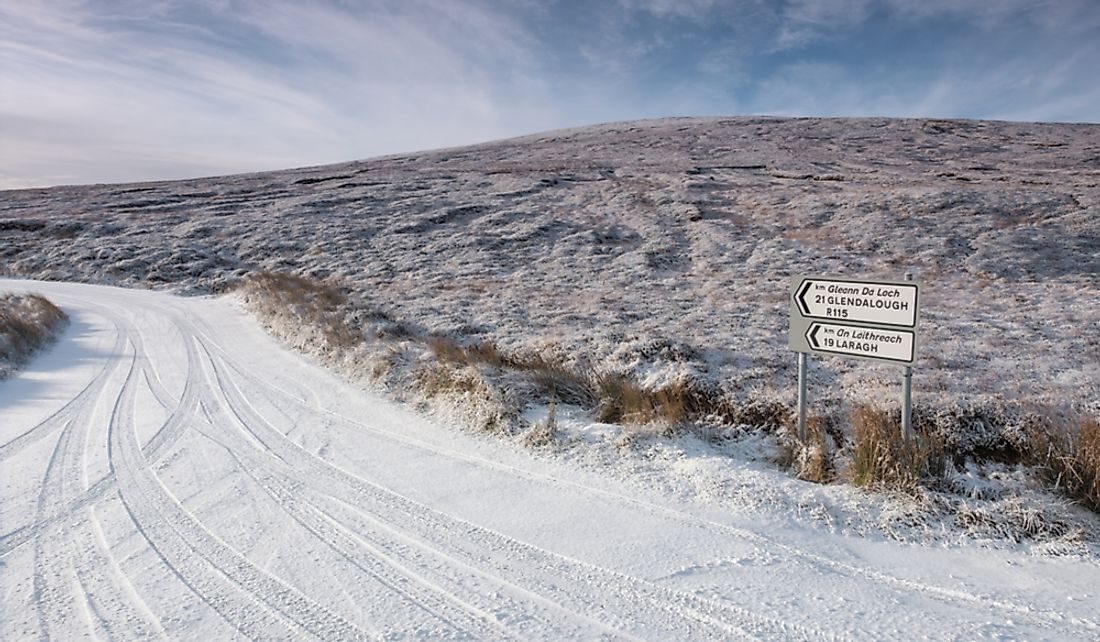Does It Snow In Ireland?

Ireland is an island located in the North Atlantic Ocean. With an area of about 32,595 square miles, it is the third-largest island in Europe and the twentieth-largest in the world. Politically, the island is split between the Republic of Ireland (4.8 million residents), which is a sovereign nation, and Northern Ireland (1.8 million people), which is part of the United Kingdom. The North Atlantic island is the second most populous European island, after Great Britain, which has a population of over 6.5 million people. Ireland has low-lying mountains and various navigable rivers which extend inland.
Climate of Ireland
The climate of the island is moist and mild, with abundant rain and no temperature extremes. Ireland experiences mild winters and cool summers, and is warmer than other regions at the same altitude. Since Ireland is located in the northeastern part of the Atlantic Ocean, the island is warmed by the North Atlantic Drift, which carries heat northwards by the prevailing winds.
Snowfall in Ireland
Even though severe cold is not common on the island and most precipitation comes in the form of rain, the mountainous regions and hills receive about 30 days of snow annually. Most low lying areas of the island receive no snow during winter, while others receive a few days of snow periodically. The Wicklow Mountains get over 60 days of snow annually. The weather on the island is influenced by the Gulf Stream, the North Atlantic Drift, and the Atlantic Ocean, and therefore predicting the winter months can be difficult.
Common Snowfall Regions
The Wicklow Mountains in the Republic of Ireland make up the most significant continuous upland region on the island, stretching from County Wicklow to Carlow, Wexford, and Dublin. The highest peak of the mountains is Lugnaquilla, which has an elevation of 3,035 feet. The region is made up of granite rock, which is surrounded by older types of rock, such as quartzite and mica-schist. The hills experience a temperate oceanic climate with wet, cold winters and damp, mild summers. The highest peaks of the mountains are covered by snow for about 50 days annually.
The Snowiest Weather Station in Ireland
Clones is a small town in the Republic of Ireland, near the western part of County Monaghan. The economy of Clones was impacted when Ireland was partitioned in 1921 due to its location near the boundary with Northern Ireland’s County Fermanagh. Clones has a population of approximately 1,680 people and is home to one of the snowiest weather stations in Ireland, which receives about 30 days of snow or sleet annually. The climate of the region has a narrow temperature range, with adequate rainfall throughout the year.
The Least Snowy Place in Ireland
The least snowy part of Ireland is Valentia Island, which receives about 5.6 days of snow or sleet each year. Located in County Kerry, Republic of Ireland, it is one of Ireland’s most western points and is connected to the mainland by a bridge in Portmagee. The island is 2 miles wide and 7 miles long, with a population of approximately 665 people. Established in 1868, the weather station on Valentia Island is a coastal weather station on the eastern Atlantic, and its report is broadcasted by the British Broadcasting Corporation's (BBC) Shipping Forecast.











